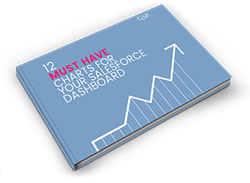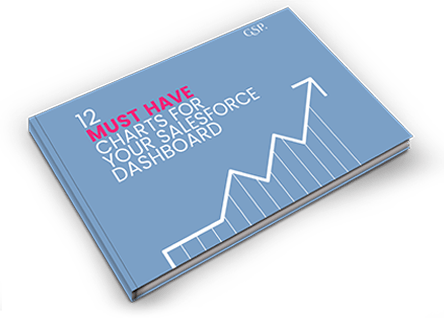The Mini Dictionary of Marketing Automation Terms
Getting the sales team to cold call an unqualified list of leads is like giving up smoking or going on a diet.
There’s always something that gets in the way. Tomorrow is always a better time to start than today.
And in any case, it often turns out to be an unfruitful waste of valuable time.
But how do you increase the flow of sales-ready leads and opportunities to the sales team?
The answer, increasingly, is marketing automation. Thousands of B2B organisations – and quite a few B2C ones – are investing heavily in marketing automation systems from vendors such as Hubspot, Pardot and Marketo. These systems provide scalable and automated marketing processes that boost the number of warm leads and drive opportunity conversion rates.
So what exactly is marketing automation? And what are the essential marketing automation terms that matter in any discussion on lead generation? Terms such as content marketing, lead nurturing, lead scoring, sales qualified lead and marketing qualified lead.
Marketing Automation defined
Let’s start at the beginning.
According to Marketo, “Marketing automation solutions provide rich functionality to automate and measure demand generation campaigns that generate more high-quality sales leads. Marketing automation is the use of technology to manage and automate the process of converting prospects to buyers. It empowers B2B marketers to focus more on the strategic and create activities that improve marketing ROI”.
http://uk.marketo.com/marketing-glossary/marketing-automation/
Here’s the Pardot equivalent. “Simply put, marketing automation works to automate your marketing communication programs. With a marketing automation platform in place, your marketing and sales teams can automate and optimize your lead generation and nurturing programs from initial prospect contact through the entire sales process”.
http://www.pardot.com/what-is-marketing-automation/
Hubspot emphasise the critical role of moving leads and contacts through the end-to-end revenue funnel. “Marketing automation is often thought of as just software to help nurture contacts more efficiently. It consists of email, workflows, lists and social tools that work with a large database of contacts to nurture them down the funnel.
“But there’s more to it than that. Marketing automation done right:
- Is coupled with a strong Top-Of-Funnel strategy to feed your database – so you actually have new people to nurture.
- Considers context; It sends the right information, to the right people, at the right time.
“With that approach, marketers can provide personalized, relevant content to their contacts throughout the entire relationship”.
http://blog.hubspot.com/marketing/definition-marketing-automation-100-words-sr
But at GSP we also say,
- Don’t make the mistake of thinking that marketing automation systems are just the responsibility of the marketing team.
- Sales people can benefit hugely from a well-configured marketing automation solution that is aligned with the end to end marketing and sales process.
- Sales people should be able to fully view and use the insights created by the marketing automation system via integration with the companies’ CRM system or sales automation tool.
In summary, the purpose of a marketing automation system is to increase the flow of warm, sales-ready leads, thereby making the sales process more efficient and the sales team more productive.
Let’s go onto the other essential terms that matter in any marketing automation discussion.
Content Marketing defined
If marketing automation is the machine that delivers a steady stream of sales-ready leads, content is the fuel powering that machine.
In fact ‘content marketing’ has become an industry in its own right, complete with its own set of founding fathers – Jay Baer, Joe Pulizzi, Marcus Sheridan.
Pullizzi is the founder of the Content Marketing Institute. It’s tough to better their definition of content marketing:
“Content marketing is the marketing and business process for creating and distributing relevant and valuable content to attract, acquire, and engage a clearly defined and understood target audience – with the objective of driving profitable customer action.”
http://contentmarketinginstitute.com/2012/06/content-marketing-definition/
Somewhat more pithily Pullizzi adds, “Your customers don’t care about you, your products, your services…they care about themselves, their wants and their needs. Content marketing is about creating interesting information your customers are passionate about so they actually pay attention to you”.
Marcus Sheridan is famous as the owner of River Pools & Spas, a company that was going bust until he turned to content marketing. This is him, explaining how his company generates leads and opportunities by using the web to answer questions that prospective customers ask. (Video: 2 mins 24 secs).
https://www.youtube.com/watch?v=aJTRZqCGYhw
What about Jay Baer?
“The difference between helping and selling is just 2 letters. But those letters make all the difference. Sell something, and you make a customer today. Help someone, and you make a customer for life.”
Baer wrote a definitive and highly readable book to explain his ideas, “Youtility”.
Here he is, explaining, “How to turn interested customers into lifelong prospects”. It’s a podcast, so listen to it whilst you’re commuting, driving, working out or walking the dog!
http://rainmaker.fm/audio/lede/jay-baer-interview/
Lead Nurturing defined
The term Lead Nurturing comes up constantly in any discussion on marketing automation. So what exactly does it mean?
“Lead nurturing is the process of building a relationship by conducting an informative dialog that helps qualified prospects who are not yet sales-ready, regardless of budget, authority or timing – and of ensuring a clean hand-off to Sales at the right time.”
That’s by John Miller, VP and co-founder at Marketo.
http://blog.marketo.com/2006/12/7_lead_nurturin.html
Miller adds, “Of course, part of the nurturing process for a lead that doesn’t have authority should include getting in touch with the decision maker that does.”
Here’s an alternative definition from Andre Pino on the Forrester blog, that also summarises lead nurturing pretty well.
“Lead nurturing is a process by which leads are tracked and developed into sales-qualified leads. Meaning that they are ready and worthy of a salesperson’s time. It is, of course, critical that Marketing jointly establish the definition of a sales-ready lead with the sales team.”
http://blogs.forrester.com/andre_pino/11-02-01-lead_nurturing_the_new_tech_marketing_frontier
In other words, lead nurturing is the recognition that not every lead is immediately sales-ready. Indeed many will never be. But immediately passing all new leads over the fence to Sales is one guaranteed way to waste everyone’s time.
If you’re in any doubt about this read the true story of why the Sales team at GSP customer Modernis, complained so bitterly about the leads passed to them from Marketing.
But how does lead nurturing actually work?
It typically involves a series of pre-prepared emails that are delivered to a customer using a marketing automation system. But these aren’t just any old emails, full of self-promotion or marketing hype. Rather, they deliver useful, valuable and compelling content that solves problems. It’s content that, over time, builds a trusted and credible relationship. Combine this with lead scoring and you have a powerful way of identify and reaching warm leads.
Lead Scoring defined
Lead nurturing is all very well, but it’s likely to be of limited value if you can’t measure the outcome or identify high priority leads.
And that’s where Lead Scoring fits into marketing automation.
Here’s Jay Famico, at Sirius Decisions. “Lead scoring is a methodology used to rank prospects against a scale that represents the perceived value each lead represents to the organization. The resulting score is used to determine which leads a receiving function (e.g. sales, partners, tele-prospecting) will engage, in order of priority.”
https://www.siriusdecisions.com/Blog/2013/Jan/What-Is-Lead-Scoring-Anyway.aspx
In other words, Lead Scoring recognises two key challenges common to most businesses:
- There are insufficient resources available to call every lead in the database.
- Not every lead wants to speak to a sales person – at least not yet.
Lead scoring delivers prioritisation. It’s the identification of those leads that might be ‘ready’ to receive proactive action by the business. ‘Ready’ in this context, means the lead or prospective customer is sufficiently advanced in their buying or research process to be willing to speak to a potential supplier (i.e. you).
If more leads are ‘ready’ to be contacted than the business can accommodate (e.g. because there’s a finite amount of tele-marketing or sales resource available) then lead scoring sets the priority. Simply put, leads with the highest score are called first.
There are typically two aspects to lead scoring.
- Demographic lead scoring. This is the process of assigning value to leads that meet certain fixed, demographic criteria. For example, leads in certain industries, geographic segments, or company size may receive a higher lead score value than others.
- Behavioural lead scoring. This is where lead scoring truly adds value. Behavioural scoring is the process of assigning value to leads based on their actions. These actions might include, for example, filling in a form on the company web site, visiting more than 5 pages in one day, visiting the pricing page or clicking on a link in a marketing email.
The value assigned to each lead score is arbitrary and specific to your business. But what is essential, is that Marketing and Sales collectively agree how the lead scores values will be ascribed.
It’s a broad subject in its own right. If you want learn more and get started, a good place to begin is Marketo’s Definitive Guide to Lead Scoring.
Sales Qualified Lead defined
There’s no point producing lots of content, delivering it via a lead nurture program and scoring your leads, if you don’t have an effective process for handing leads from Marketing to Sales at the right time.
An effective process, assumes of course, that all parties agree on the difference between a lead and an opportunity. In our experience, the ambiguity over these two words is a major cause of confusion in marketing automation projects. The result is ineffectual hand-off processes from Marketing to Sales, and warm leads that don’t get followed up.
Clarifying the difference between a lead and an opportunity is such a key element of effective marketing automation that we’ve written an entire blog post about it. It includes several diagrams that you can download to help build your own Marketing-to-Sales hand-off process.
So let’s help improve our hand-over process by considering several critical terms, starting with Sales Qualified Lead. Here’s Dave Rigotti of Bizible to define it for us.
“Sales Qualified Leads (SQLs) are leads that are ripe for sales interaction. They’ve not only shown an interest in your product, but have shown interest in getting your product. For example, they’ve requested more information or a demo. This is typically where the handoff between marketing and sales happens or at least is started.”
http://www.bizible.com/blog/bid/383186/lead-stage-definitions
In short, a Sales Qualified Lead is someone that has identified a critical need in their business, is seeking a solution, trusts you as a potential supplier and is now ‘sales-ready’. There’s no guarantee a deal is going to be done, or even that a quote or proposal will be provided, but the prospect has at least agreed to speak to a sales person, in what both parties agree will be a sales conversation.
Typically the lead will have agreed to this conversation during a pre-sales qualification call or by filling in a form on your web site.
But let’s go back a step and consider a preceding definition, “Marketing Qualified Lead”.
According to Rigotti, “Marketing Qualified Leads (MQLs) are leads that have shown some initial interest in your product. For example, viewing specific feature pages on your website or opening a certain percentage of your nurturing emails. Marketing qualified leads are not yet ready to buy however”.
http://www.bizible.com/blog/bid/383186/lead-stage-definitions
We would go a step further in that last sentence. It’s not just that Marketing Qualified Leads are not ready to buy. They’re not yet ready to engage with Sales. Rather, Marketing Qualified simply means sufficient information has been gathered about the lead that identifies this person as a legitimate candidate for further segmented lead nurture communications.
There’s one other definition that we need to consider, “Sales Accepted”. For this we need to jump forward, beyond the Sales Qualified definition.
Rigotti says, “Sales Accepted Leads (SALs) are leads that Sales has placed into their process, based on agreed-upon criteria established between Marketing and Sales. Most often, a sales qualified lead will become sales accepted, but in rare cases, such as the lead could not be contacted, they will not make it into this stage. This is arguably the most important transition in the funnel.”
http://www.bizible.com/blog/bid/383186/lead-stage-definitions
So what exactly is the difference between a Sales Qualified Lead and a Sales Accepted Lead?
A Sales Qualified is a lead that Marketing believes is ready to be spoken to by a sales person. It will meet criteria that have been agreed with the sales team and it will be handed over for a sales person to contact.
The sales person confirms that the lead meets the agreed criteria by changing the status to Sales Accepted. It’s the formal acceptance of the lead by sales and most often happens before the sales person contacts the lead. If the sales person believes the lead doesn’t meet the agreed criteria then he can reject it. But if the lead does meet the criteria, the lead must be ‘accepted’ and contacted by sales within the timescale agreed between sales and marketing.
Summary – the Marketing Automation terms that matter
Businesses are investing heavily in marketing automation order to increase the effectiveness and productivity of their sales teams.
These marketing automation terms reflect the process of using content marketing and lead nurture programs to establish and build valuable relationships with prospective customers. Lead scoring supports the identification of sales-ready leads that transition through marketing qualified, sales qualified and sales accepted stages.
We will publishing further articles over the next few weeks that explain how to use marketing automation to drive revenue growth. Stay posted by completing the form below. And in the meantime, don’t hesitate to get in touch if you’d like to discuss how any of these powerful concepts can be applied to your business.

Don’t have time to read the entire Blog Post right now?
No problem.
You can download the entire “Your Sales Forecast Is Probably Wrong” eBook for free by completing the form below!




